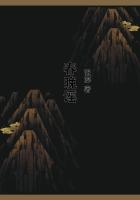Even on a rather steep coast, though such must ever be unfavourable to widely extended deposits, the formations would always tend to increase in breadth from the water encroaching on the land.Hence we may admit that periods of slow subsidence will commonly be most favourable to the accumulation of CONCHIFEROUS deposits, of sufficient thickness, extension, and hardness, to resist the average powers of denudation.
We have seen that at an ancient tertiary epoch, fossiliferous deposits were extensively deposited on the coasts of South America; and it is a very interesting fact, that there is evidence that these ancient tertiary beds were deposited during a period of subsidence.Thus, at Navidad, the strata are about eight hundred feet in thickness, and the fossil shells are abundant both at the level of the sea and some way up the cliffs; having sent a list of these fossils to Professor E.Forbes, he thinks they must have lived in water between one and ten fathoms in depth: hence the bottom of the sea on which these shells once lived must have subsided at least 700feet to allow of the superincumbent matter being deposited.I must here remark, that, as all these and the following fossil shells are extinct species, Professor Forbes necessarily judges of the depths at which they lived only from their generic character, and from the analogical distribution of shells in the northern hemisphere; but there is no just cause from this to doubt the general results.At Huafo the strata are about the same thickness, namely, 800 feet, and Professor Forbes thinks the fossils found there cannot have lived at a greater depth than fifty fathoms, or 300 feet.These two points, namely, Navidad and Huafo, are 570miles apart, but nearly halfway between them lies Mocha, an island 1,200feet in height, apparently formed of tertiary strata up to its level summit, and with many shells, including the same Turritella with that found at Huafo, embedded close to the level of the sea.In Patagonia, shells are numerous at Santa Cruz, at the foot of the 350 feet plain, which has certainly been formed by the denudation of the 840 feet plain, and therefore was originally covered by strata that number of feet in thickness, and these shells, according to Professor Forbes, probably lived at a depth of between seven and fifteen fathoms: at Port S.Julian, sixty miles to the north, shells are numerous at the foot of the ninety feet plain (formed by the denudation of the 950 feet plain), and likewise occasionally at the height of several hundred feet in the upper strata;these shells must have lived in water somewhere between five and fifty fathoms in depth.Although in other parts of Patagonia I have no direct evidence of shoal-water shells having been buried under a great thickness of superincumbent submarine strata, yet it should be borne in mind that the lower fossiliferous strata with several of the same species of Mollusca, the upper tufaceous beds, and the high summit-plain, stretch for a considerable distance southward, and for hundreds of miles northward;seeing this uniformity of structure, I conceive it may be fairly concluded that the subsidence by which the shells at Santa Cruz and S.Julian were carried down and covered up, was not confined to these two points, but was co-extensive with a considerable portion of the Patagonian tertiary formation.In a succeeding chapter it will be seen, that we are led to a similar conclusion with respect to the secondary fossiliferous strata of the Cordillera, namely, that they also were deposited during a long-continued and great period of subsidence.















